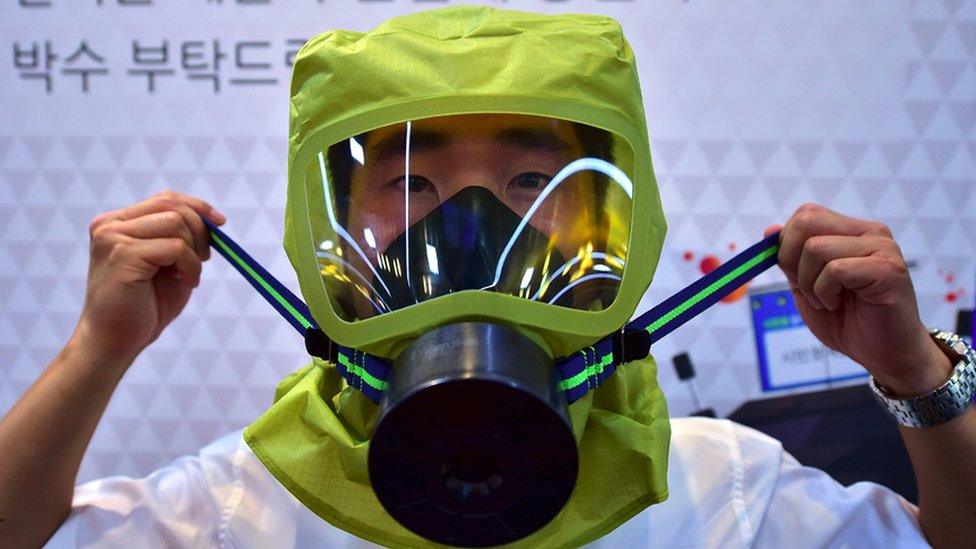Are North Korea's neighbours worried about an attack?
- Published
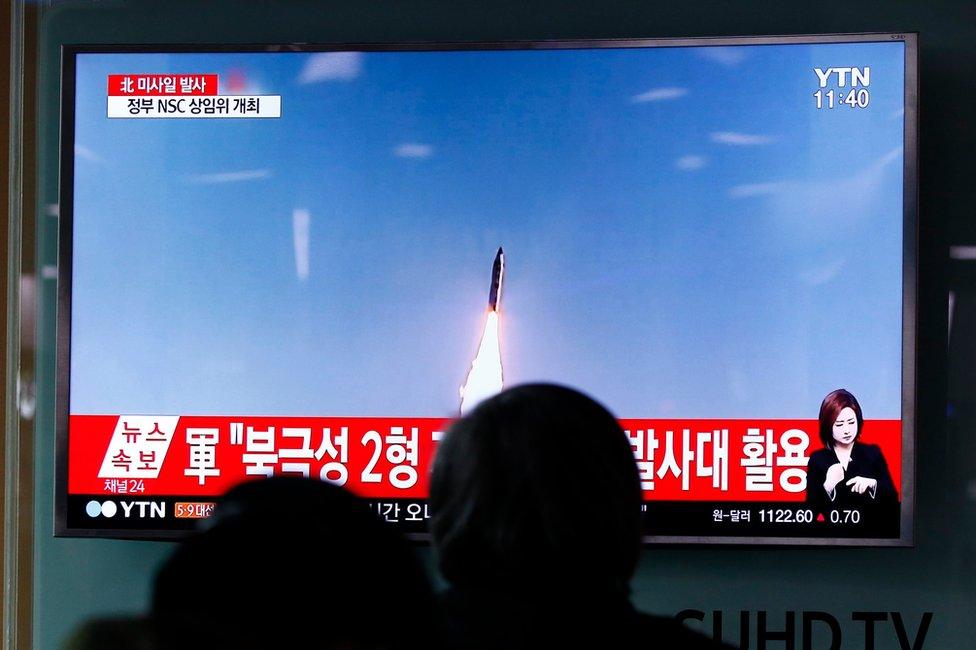
North Korea has been conducting missile launches and tests more frequently in recent months, including one in early April
With tensions rising on the Korean peninsula, the possibility of a missile or nuclear weapon landing in South Korea and Japan has now become more real.
Both the US and North Korea have been trading heated rhetoric since the US announced it would deploy a group of warships to the region.
Pyongyang has reacted furiously and threatened a pre-emptive strike.
How likely is a nuclear or missile strike?
Observers say that while North Korea is working towards achieving full nuclear missile capability, it is highly doubtful that it has a working long-range missile that could hit the US.
Several of its recent missile tests, including one earlier this month, have failed.
One view is that North Korea's threats is just posturing and it is unlikely to follow through with an actual attack.
But if North Korea were to actually launch a strike, neighbouring South Korea and Japan could be top targets.
Pyongyang appears to have working missiles that could hit those countries.
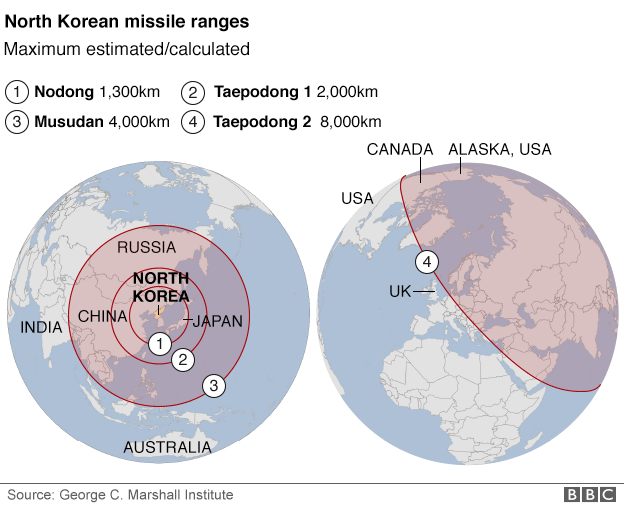
So are they scared?
Both countries have anti-missile defence systems - some supplied by the US - that could thwart incoming rockets.
Japan's system employs Aegis destroyer ships and land-based Patriot PAC-3 units, according to its defence ministry. , external
In South Korea, the US is in the midst of deploying its controversial Thaad anti-missile defence system.
Both countries are also currently conducting pre-planned joint military exercises with the US.
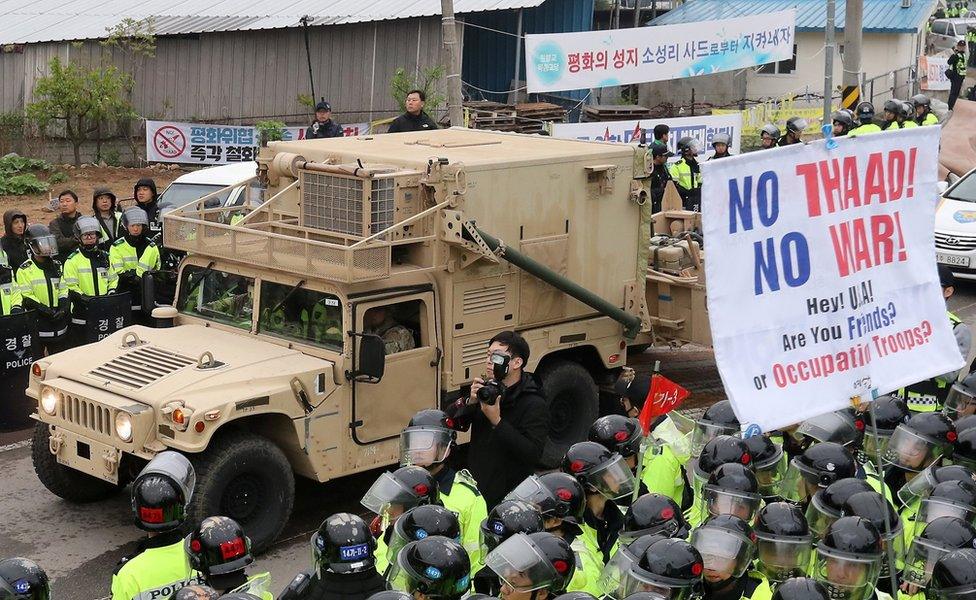
The Thaad deployment has been opposed by some South Koreans as well as China
Japanese authorities also issued guidelines last Friday to the public on how to survive a missile attack.
They say it would only take minutes for a missile to reach Japan and urged citizens to seek shelter in buildings or underground.
Citizens have been told that if a missile lands nearby, they should cover their mouths and noses and run away - if indoors they should stay away from windows to avoid injuries from shattering glass.
They would be alerted about an incoming attack on TV, mobile phones, radio and outdoor loudspeaker systems via a system called J-Alert.

The guidelines also advise citizens to lie on the ground and cover their heads if there are no buildings nearby
One prefecture government conducted an evacuation drill last month and several local officials are now calling for nationwide drills, The Japan Times., external reported.
Meanwhile in South Korea, which is more used to the North's threats, the mood appears to be less tense with little sign of ramped-up civil defence preparations.
Authorities regularly conduct evacuation drills and also have an emergency alert system.
South Koreans were guided to 25,000 shelters in the drill
Due to its location just 56km (35 miles) from the North Korean border, the South Korean capital Seoul is also vulnerable to artillery fire.
On Tuesday North Korea conducted a large-scale firing drill to mark its army's 85th founding anniversary.
Analysts say the country has more than 20,000 artillery pieces and the BBC's Diplomatic Editor Mark Urban says its capability would be hard to neutralise, external.
Has North Korea attacked before?
Last month Pyongyang launched several missiles into the Sea of Japan, with three landing in Japanese waters. Prime Minister Shinzo Abe called it a "new stage of threat".
Japanese authorities have also said, external that a North Korean long-range rocket launched in February 2016 passed over islands in Okinawa prefecture, travelling 1,600km (994 miles) within 10 minutes.
South Korea meanwhile has a long history of border skirmishes with the North.
One of the most serious incidents in recent years took place in 2010, when North Korea shelled the island of Yeonpyeong at the two countries' maritime border, killing several soldiers and civilians.
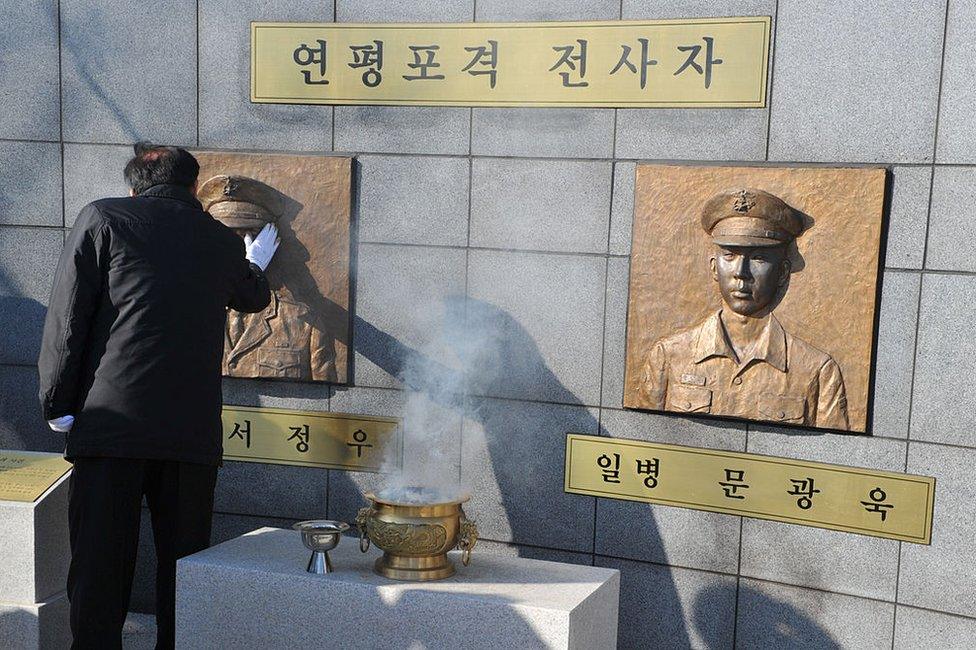
Two South Korean marines were killed in the 2010 Yeonpyeong incident
That same year saw the sinking of a South Korean navy ship in the same area, killing 46 sailors. The incident was attributed to a North Korean torpedo launched from a submarine.
In 2015 Pyongyang also fired a rocket towards the South Korean town of Yeoncheon on the western border, prompting an evacuation.
- Published15 September 2015
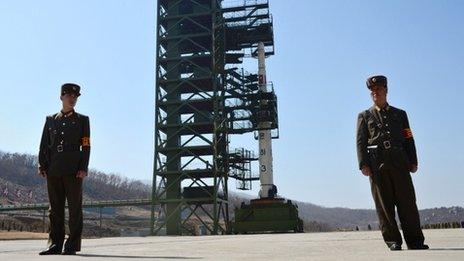
- Published5 March 2016
- Published10 August 2017
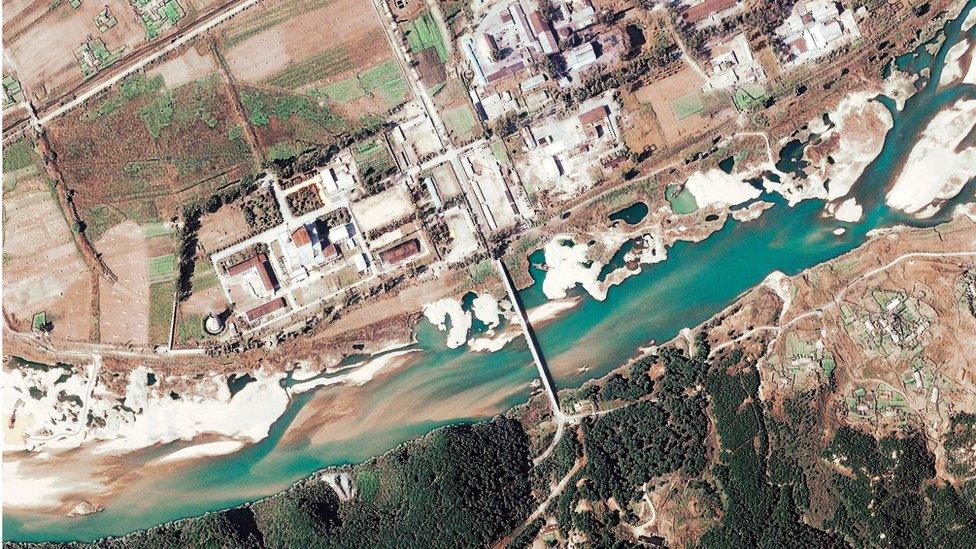
- Published10 August 2017
- Published9 October 2016
